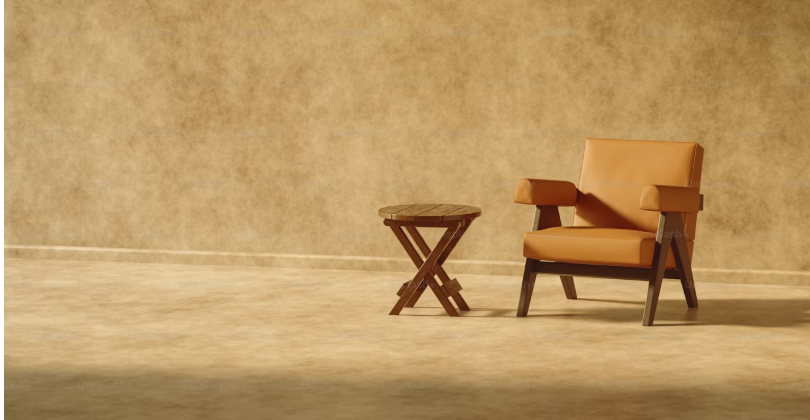Why Repurpose Vintage Furniture?
Repurposing vintage furniture isn’t just about being creative; it’s about giving old pieces a second life while also contributing to sustainability. Vintage furniture is built to last, often with better craftsmanship than mass-produced pieces. Plus, transforming these items into something new allows you to infuse your own personality into your space.
The Environmental Impact of Repurposing

In today’s world, repurposing furniture plays a crucial role in reducing waste and conserving resources. The act of upcycling prevents usable materials from ending up in landfills, helping you make a positive impact on the planet while creating unique pieces for your home.
The Growing Popularity of Vintage Furniture
Vintage furniture is more than just a trend; it’s a statement. Whether you’re in the market for antique tables, retro chairs, or mid-century desks, there’s been a noticeable shift towards incorporating vintage styles into modern decor. People are looking for character, history, and sustainability.
DIY Ideas to Transform Vintage Furniture
Restoring Old Chairs and Couches
When it comes to vintage chairs, a little love can go a long way. Restoring them to their former glory or giving them a modern twist can completely change the vibe of a room.
Reupholstering for a Modern Look
One of the easiest ways to breathe new life into an old chair or couch is by reupholstering it. Choose vibrant fabrics for a bold statement or neutral tones for a more minimalist approach.
Refinishing Wooden Tables and Desks
Wooden tables and desks often show wear and tear over time, but that doesn’t mean they’re beyond saving. A good sanding job and a fresh stain can bring out the natural beauty of the wood and give it a brand-new life.
Sanding and Staining Techniques
Sanding removes imperfections and prepares the wood for staining. Choose a stain that matches your room’s aesthetic—whether you prefer a rich, dark hue or a lighter, natural look.
Upcycling Vintage Storage Units
Old cabinets and dressers often have more potential than meets the eye. With some creativity, you can repurpose these items into functional and stylish storage solutions.
Transforming Cabinets into Shelves
By removing cabinet doors and adding some brackets, you can easily convert an old cabinet into an open shelving unit perfect for displaying books or decor.
Turning Old Dressers into Bar Carts
Take an old dresser, remove the top drawer, and install wheels to create a unique bar cart that adds both character and functionality to your space.
Adding New Hardware for Instant Character
Sometimes, a simple change is all you need. Swapping out the knobs and handles on vintage furniture can make a big difference in its overall aesthetic.
Choosing the Right Knobs and Handles
Whether you opt for brass, ceramic, or modern metals, the right hardware can instantly elevate your piece.
Painting Vintage Furniture for a Fresh Twist
Painting is one of the most effective ways to make vintage furniture pop. You can give your pieces a modern makeover or embrace a more rustic vibe with the right paint techniques.
Bold Colors vs. Neutral Shades
Bold colors like navy blue or mustard yellow can make your vintage furniture stand out, while neutral shades like gray or cream offer a timeless, understated look.
Repurposing for Small Spaces
Small spaces can benefit greatly from repurposed furniture. Whether it’s turning a vintage dresser into a compact entryway console or using a repurposed chair as a stylish side table, there’s no limit to what you can do.
Consumer Preferences and Market Trends
The Shift Towards Sustainable Design
Sustainability is a major factor driving the popularity of vintage and repurposed furniture. Consumers are more conscious about their environmental footprint and are increasingly turning to secondhand and upcycled pieces.
DIY and Customization as the New Norm
People love adding their personal touch to furniture, and repurposing offers endless opportunities for customization. This hands-on approach is especially popular among younger generations who value creativity and individuality in their spaces.
Challenges and Tips for Beginners
Choosing the Right Projects for Your Skill Level
If you’re new to repurposing, start small. Choose projects that match your current skill level—like repainting a chair or swapping out hardware—before moving on to more complex pieces.
Safety and Tools You’ll Need
Having the right tools is essential. Make sure you’ve got the basics: a drill, sandpaper, paintbrushes, and safety gear. If you’re working with power tools, always follow safety guidelines to avoid injury.
Conclusion: Why Repurposing Vintage Furniture is Here to Stay
In a world where sustainability and creativity are prized, repurposing vintage furniture isn’t just a trend—it’s a movement. Not only does it allow you to create one-of-a-kind pieces for your home, but it also reduces waste and supports eco-friendly practices. Whether you’re restoring an antique chair or transforming an old dresser, these DIY projects bring new life and character to your space.
Frequently Asked Questions (FAQs)
- What’s the easiest vintage furniture project for beginners?
- Start with simple projects like repainting or reupholstering old chairs.
- How do I choose the right fabric for reupholstery?
- Consider durability, texture, and color. Choose fabrics that complement your home’s aesthetic.
- Can I repurpose any vintage furniture?
- Almost any vintage furniture can be repurposed with the right tools and creativity.
- What are the best types of paint for furniture?
- Chalk paint and milk paint are great for vintage furniture as they give a smooth finish and are easy to work with.
- How do I ensure my repurposed furniture is durable?
- Make sure to sand, clean, and properly prime surfaces before painting or staining. Proper sealing also ensures longevity.

